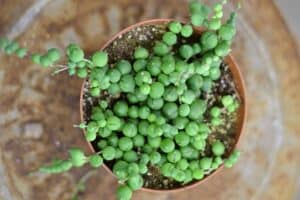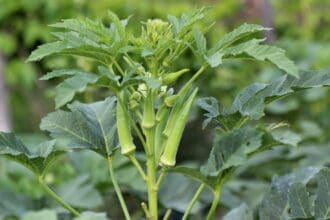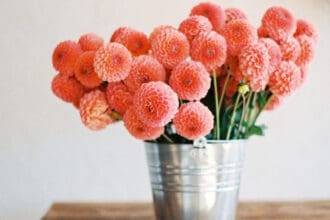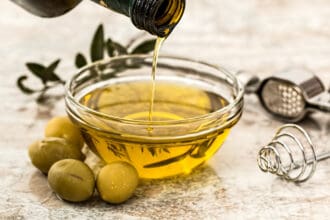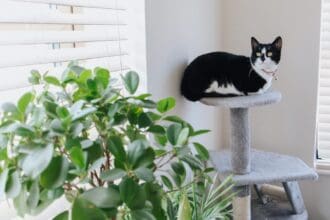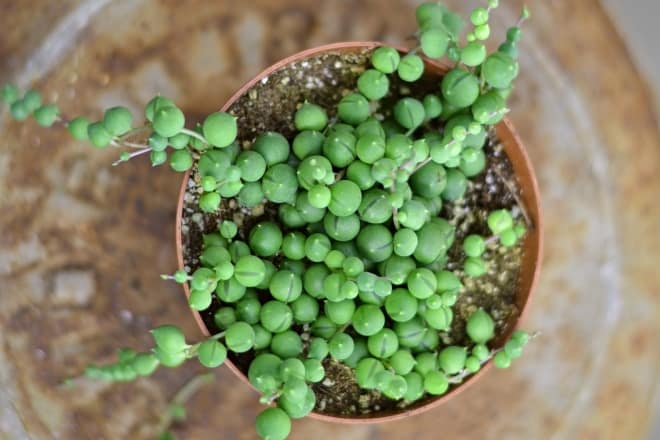
via: Pixabay / Veronicatxoxo
Senecio rowleyanus, also known as String of Pearls, is an amazing type of succulent that you can add to your home. When grown and cared for properly, these grow into a beautiful trailing succulent that makes for a great hanging plant inside your home.
The good news is, String of Pearls are easy to grow and care for. As long as you know how to care for succulents, you'll be able to make this plant thrive inside your home. You'll smile upon seeing how beautiful this plant grows in your home.
Contents
What is Senecio rowleyanus?
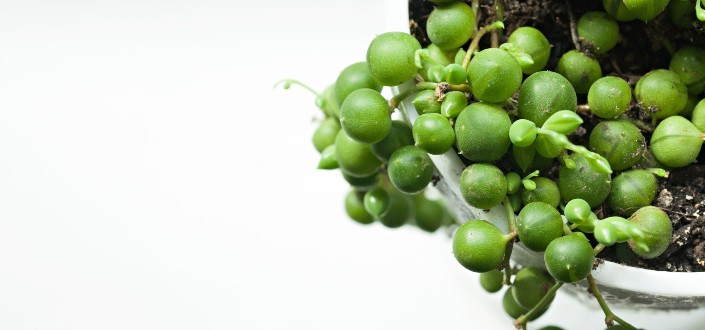
via: Unsplash / Carol Lara
Native to the dry areas of southwestern Africa, Senecio rowleyanus is considered a flowering perennial succulent. It is part of the Asteraceae family. The plant grows its vines in shady areas while it is being protected by tall plants and rocks. Whenever the stem touches the ground, it starts to root.
The plant was named after British botanist Gordon Douglas Rowley, who specialized in succulents and cacti. It is more popularly called String of Pearls, String of Beads, Rosary succulents, or Curio Rowleyanus. The name best fits its pea-shaped leaves and long trailing stems.
The unique shape of the plant is a result of its adaptation to the dry environment where the plant naturally grows. Thanks to this shape, the succulent is able to store enough water and minimize its exposure to the hot desert air.
Why is Knowing How To Grow And Care For Senecio rowleyanus Important?

via: Pexels / cottonbro
One of the reasons why many love to grow and care for the Senecio rowleyanus is because it is quite low-maintenance. Since it is considered succulent and cacti, it doesn't require an expert gardener to take care of the plant. As long as you know how to care for succulents, you'll be able to keep the plant happy and healthy. And it won't be long until you start seeing the results of your hard work.
How To Grow and care for String of Pearls (Senecio rowleyanus)
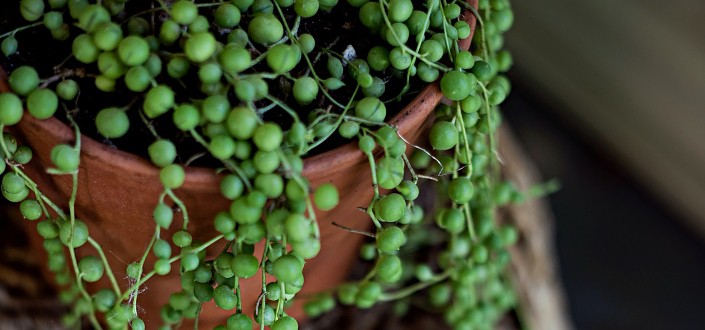
via: Unsplash / Jennifer Burk
When it comes to caring for String of Pearls, you need to put it in cacti and succulent soil mix that will be able to absorb the right amount of water yet allow excess moisture to drain out. You can make your own draining soil by mixing soil with inorganic materials, such as pea gravel, pumice, or sand in a 50-50 manner.
Since this type of succulent has shallow roots, you won't need to plant this in a very deep container. It is actually better to use a shallow container so that drainage can be encouraged. This will also dry the soil quicker. You can use clay containers for succulents. Plastic and ceramic containers are okay to use as well, but they do not encourage water evaporation as much as clay containers do.
Just like other succulents, String of Pearls love bright light. They can be grown indoors, near a sunny window. If your home doesn't get enough sunlight, you can place your container under a fluorescent light for a few hours each day.
Even though this plant loves getting bright indirect light, it can be sensitive to direct sunlight. That said, you should make sure that your String of Pearls is not placed in an area with a very high temperature. If you are growing this succulent outdoors, place it in an area that gets shady during noontime since this is when the sun is brightest.
Additionally, you should remember to place your container of String of Pearls in an area with enough room so it can expand and sprawl. To make the most of its cascading stems, place the plant in a hanging basket.
1. Identify which type of succulent
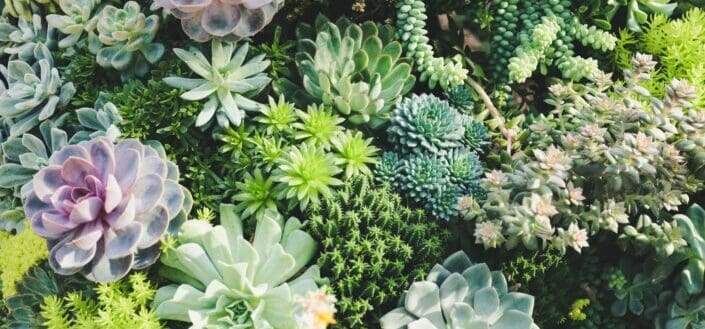
via: Unsplash / Yen Vu
There are many different types of succulents in existence. The best way these are identified is through the shapes of their leaves and how they grow. But what separates succulents from other types of plants is their fleshy leaves. Even then, there are some succulents that look remarkably similar to each other. One example is the echeveria and sempervivum, which are both classified under fleshy-leaved plants. Telling them apart can take some getting used to.
Apart from their fleshy leaves, succulents are differentiated by how they grow. First, there are outdoor succulents that grow in warm and dry climates. These plants can withstand high temperatures and be under direct sunlight. Some examples of succulents that thrive outdoors are Agave, Roseum Sedum, Torch Plant, Hens and Chicks, and Candelabra Cactus.
Just like its name suggests, indoor succulents are best grown indoors. These plants grow best in warm and dry climates and away from direct sunlight. Some examples of these succulents include Aloe Vera, Burro's Tail, Flaming Katy, Jade Plant, Echeveria, and String of Pearls.
2. Know How To Water String of pearls
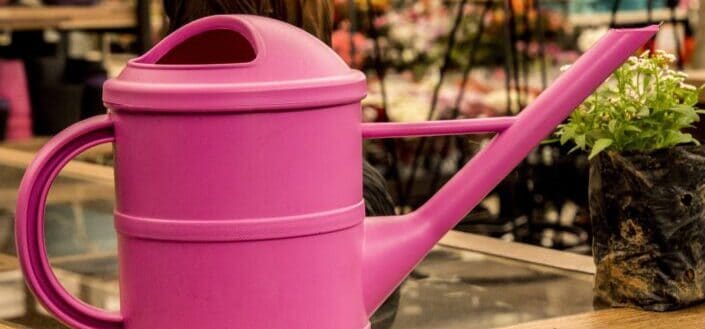
via: Pixabay / JoaoBOliver
The biggest enemy of succulents, not just String of Pearls, is overwatering. You have to understand that this plant is native to South Africa's arid regions. This means they are drought tolerant and they actually prefer infrequent watering.
A simple trick to know how to water succulents is to let the top few inches of soil dry out completely before adding water. During summer, your succulents will need more water compared to the winter season.
With your String of Pearls, you'll know that your plant needs watering when its pea-like leaves look shriveled or dry. Even though these plants are capable of withstanding drought, they can still die out if the soil is bone-dry.
You will need to water younger plants more often compared to established plants, which you can mist once every few days. Once String of Pearls has established, they become more tolerant to drought since its rooting system grows and stores more water in the beads.
Another thing you have to remember is that you will need to adapt your watering schedule to your climate. If you reside in an area with a very dry climate, you will need to water your plants more frequently. Just remember to keep an eye out on its soil and water whenever necessary.
3. Know How To Propagate String of pearls
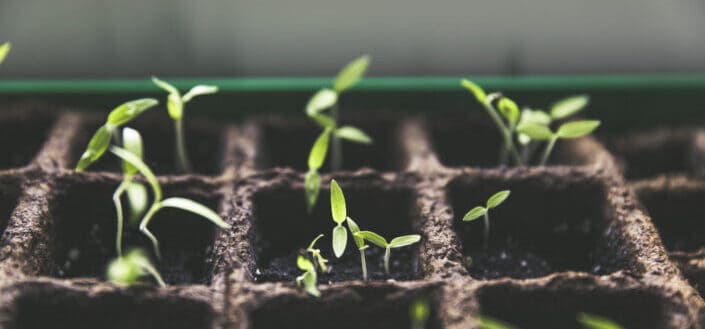
via: Pexels / Markus Spiske
It is extremely easy to propagate String of Pearls. If you already know how to propagate succulents, you'll have no trouble propagating Senecio Rowleyanus too.
You simply need to take a cutting that is at least 4 inches long. Make sure to remove the beads on one end before you stick them in the soil. Since this plant grows fast, it will root and develop new growth in just a couple of weeks.
Another technique you can use to propagating this succulent is to lay a stem cutting on the soil. You won't need to stick one end of the stem in the soil anymore. Any part that touches the soil will root.
Remember to mist your fresh cutting lightly once every few days since it needs more moisture than established plants. Once the plant becomes more mature, you can stop misting and just start watering every two weeks or so.
Place your new plant in a shallow container and fill it with enough soil so the plant will trail down.
4. Caution
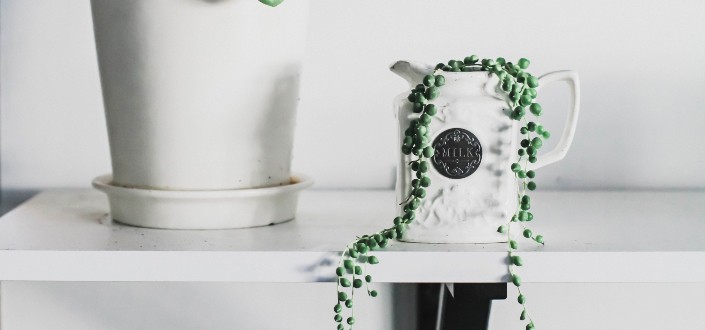
via: Unsplash / Kara Eads
There is one thing you have to remember about this plant, especially if you have pets at home or small children. The leaves and sap of this succulent are slightly toxic. The main symptoms associated with the ingestion of Senecio Rowleyanus are vomiting, nausea, rashes, and lethargy.
More Awesome Succulents
Whether you're a new plant parent or a seasoned one, succulents are a great addition to any garden. They do not require too much attention yet still manage to grow beautifully in your home. Feel free to check out the other succulent varieties that are available in your area to see any that you like. Some recommendations include the following:
- Just like the String of Pearls, the String of Hearts is another trailing plant. It differs in appearance since it has cream, pink, and green heart-shaped leaves. It also has a purple stem. You can find tiny tubers forming on the base of its leaves, which is why it is otherwise referred to as a Rosary Vine.
- Aloe brevifolia, or Short-Leaf Aloe, is another succulent variety that you can grow at home. It has wide triangular, fleshy leaves with varying colors depending on where you grow it. If you grow the plant in light shade, the leaves turn pale blue. Under full sun, its leaves turn rosy-pink and golden-yellow.
- Another trailing succulent that you can grow at home is the Sedum adolphii, which is best known for its football-shaped leaves. When exposed to lots of sunlight, its tips turn red. But during Spring, you can expect white blossoms.
In Conclusion
Learning how to care for succulents can be intimidating, especially if you are a new plant parent. But you can always start doing it with the String of Pearls. It is fast-growing and requires little maintenance.
Once you see your Senecio rowleyanus growing and trailing from your hanging basket, you'll be pleased with your hard work.


